Discover a Hidden Jewel in Perugia: Keeping the Art of Umbrian Textiles Alive
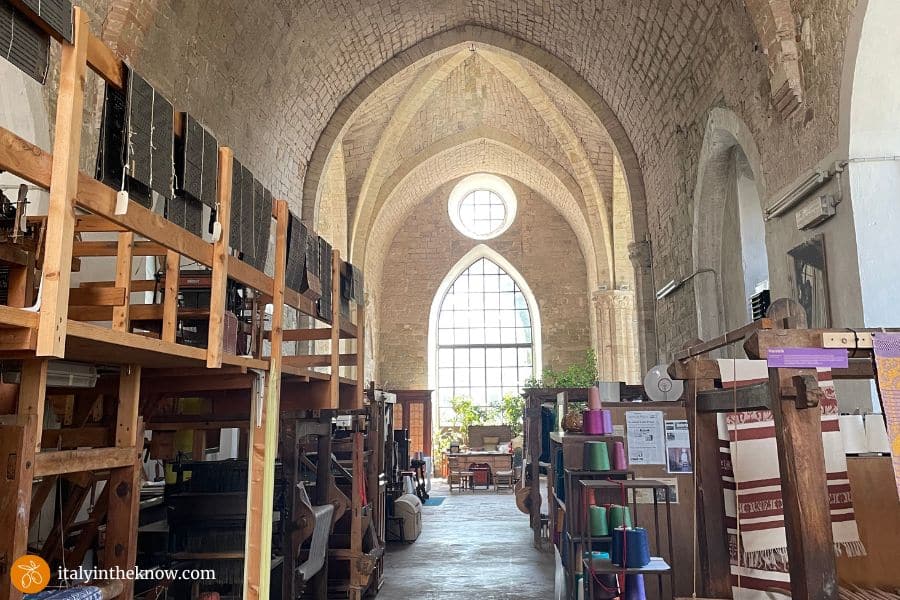
If you’re planning a trip to Perugia, don’t miss the Giuditta Brozzetti Museum Atelier. This enchanting studio is one of Italy’s last hand weaving treasures. Discover the art of Umbrian textiles and immerse yourself in a rare, centuries-old craft.
The studio is located in the historic Church of Saint Francis of the Women. For four generations, the art of handweaving has been kept alive here, passed down from mother to daughter.
In this calm and bright space, you can watch the detailed weaving process and learn about the centuries-old tradition of Umbrian weaving. It’s a special way to connect with the past.
The studio is run by Marta, who is the fourth generation in her family to carry on this craft. Here, she works with Aurélie and Sophie to create beautiful tapestries, tablecloths, bedspreads, and other home décor items. Part of the studio is set up as a showroom where you can buy finished pieces or order custom-made works.
The Birth of a Workshop: Preserving Umbrian Textiles for Generations
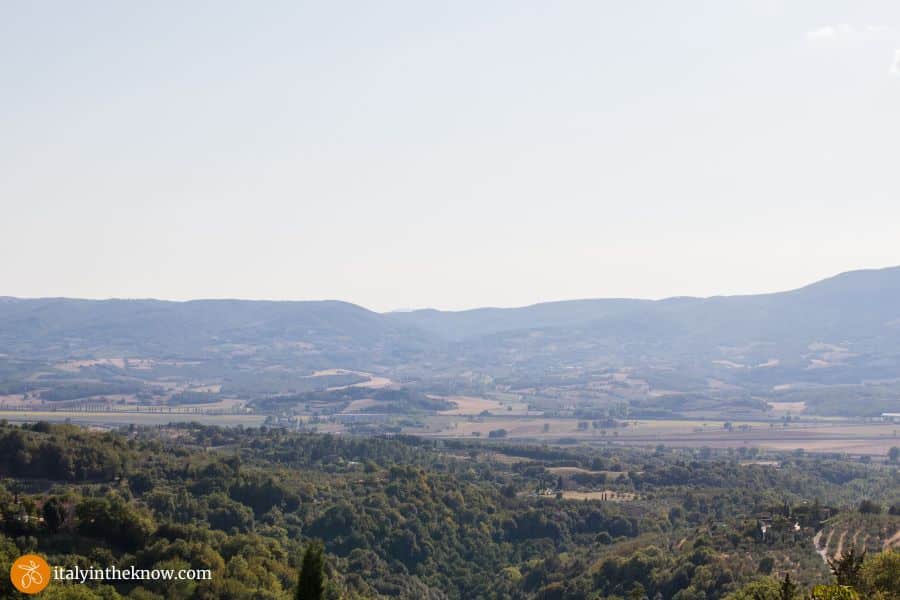
The story behind the museum-workshop is captivating and inspiring. During World War I, Giuditta Brozzetti served as an elementary school superintendent, traveling through rural regions to oversee the schools in her jurisdiction. On these journeys, she found that peasant women were creating exquisite textiles at home, keeping the ancient weaving tradition alive.
She gathered these pieces to display and sell at the Permanent Italian Decorative Arts exhibition in Perugia. The income from these sales was crucial in providing financial independence for rural women.
This success inspired Giuditta to establish a workshop dedicated to producing traditional Umbrian textiles and historical damasks. Over time, the Giuditta Brozzetti workshop grew into one of Italy’s most renowned and prestigious artistic textile workshops, a legacy of excellence carried on by the fourth generation today.
Umbrian Textile Traditions: A Historical Overview
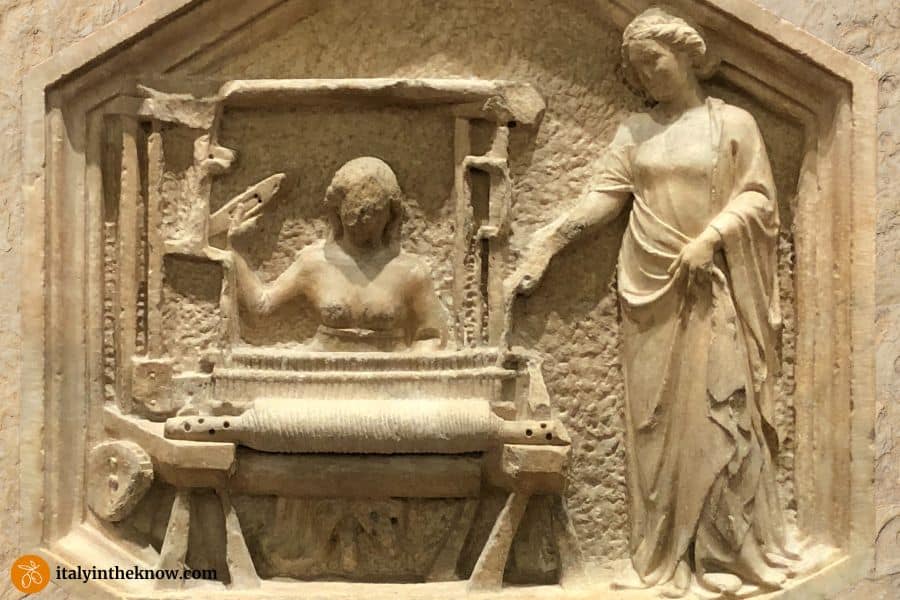
These textiles played a key role in the rich tradition of Medieval and Renaissance Perugia. By the late 12th century, Perugian Tablecloths were commonly used as altar cloths in churches throughout central Italy.

The importance of these textiles is clear in the artwork of famous artists like Simone Martini, Pietro Lorenzetti, Giotto, and Ghirlandaio. These masters often included Perugian Tablecloths in their paintings.
For centuries, Perugian textiles were highly prized. They were found in the inventories of important churches and monasteries all over Italy and Europe.
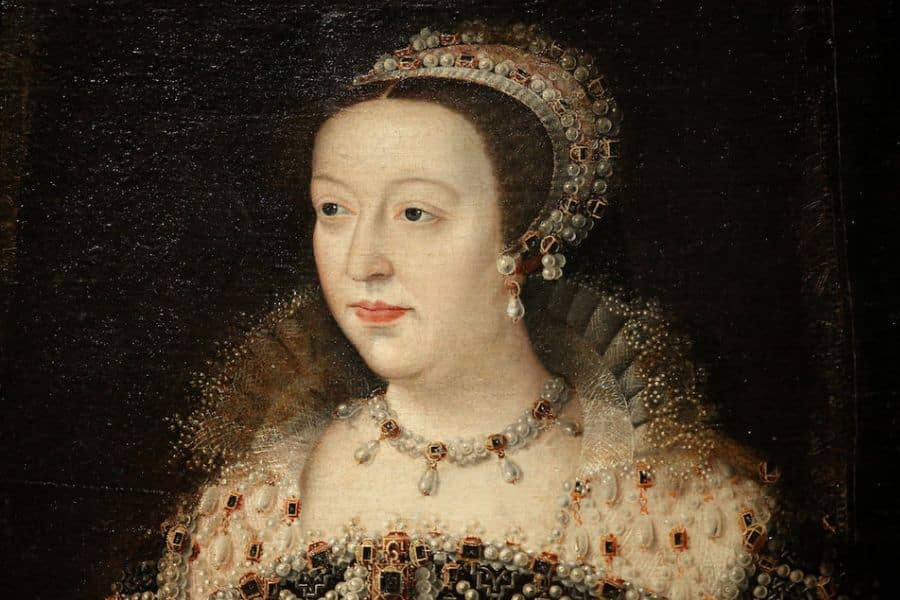
These fabrics were also valued in homes and often mentioned in legal documents as valuable possessions. For example, “Perugian tablecloths and pannili” were included in the dowry of Catherine de’ Medici when she married Henry II of France, showing just how valuable they were.
The Church of Saint Francis of the Women: A Historic Backdrop
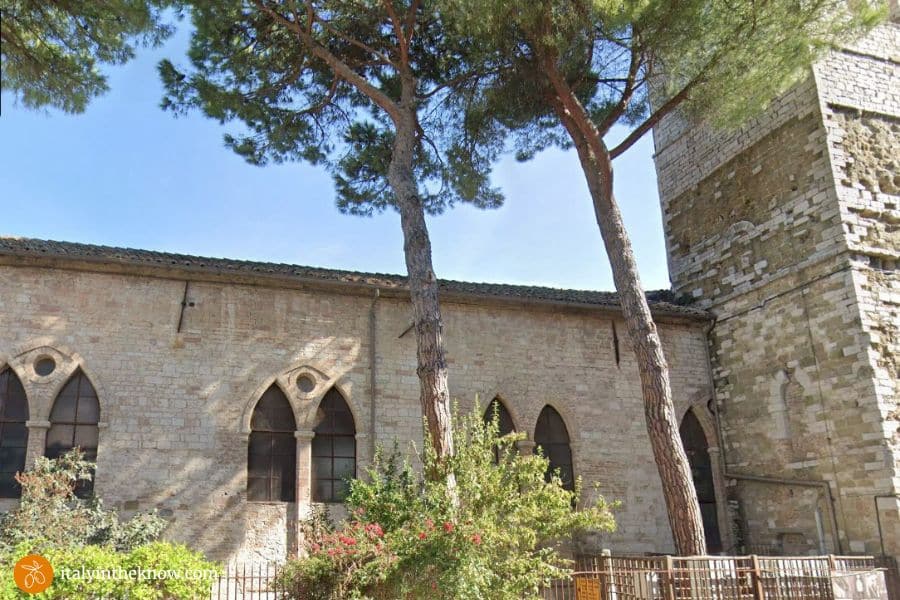
This historic hand weaving studio is in the Church of Saint Francis of the Women. It’s located in the peaceful Valley of the Conca.
While preaching in Perugia, Saint Francis built this hermitage in 1212. It is the oldest Franciscan Church in town and one of the first in Italy. The church got its name when the Franciscan monks gave it to the Benedictine nuns in 1252.
Over the centuries, this site has had many uses. In 1810, it became a school for poor girls.
Later in the 19th century, it turned into a spinning mill famous for its top-quality, award-winning silk. The mill employed 300 women and played a key role in Perugia’s economy.
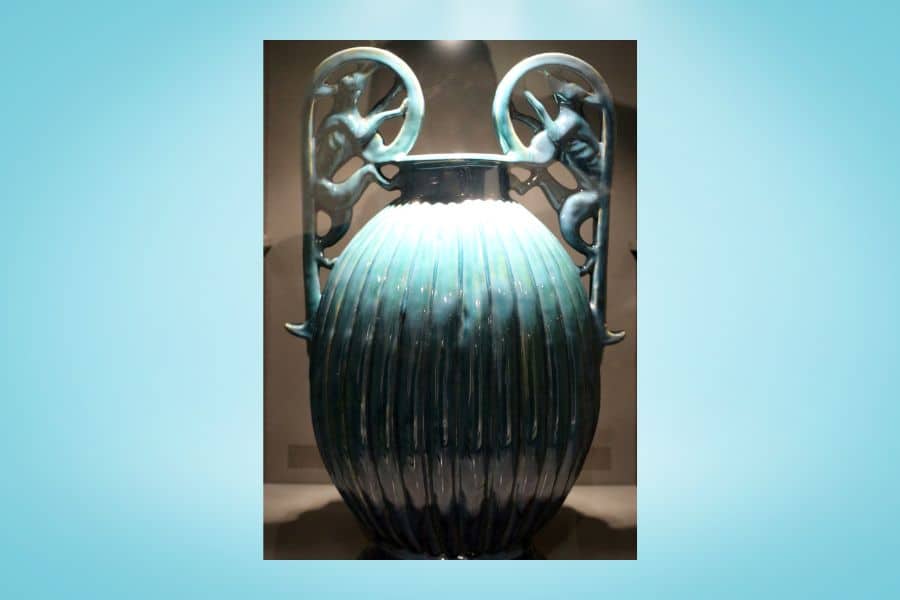
In 1925, it became a ceramic factory called La Salamandra, known for its modern style. Today, it is a museum-workshop for textiles.
Visiting Giuditta Brozzetti Museum Atelier
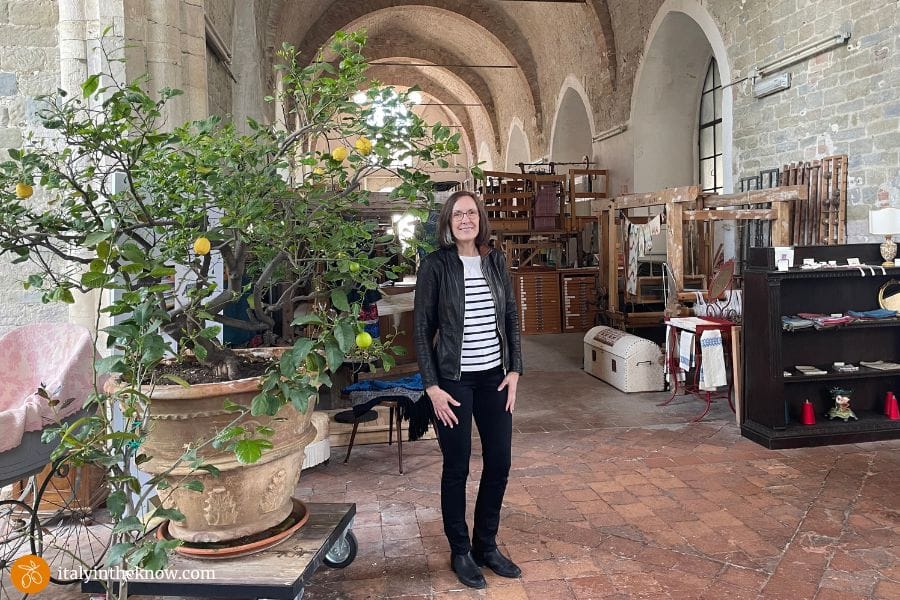
Visiting the museum-workshop is a delightful experience. Marta, Aurélie, and Sophie are passionate about their craft and love sharing how they create beautiful textiles. They are dedicated to preserving the Umbrian textile tradition in Perugia while also introducing new designs inspired by the past.
As you tour the space, their enthusiasm for their work is contagious. You’ll see how each piece tells its own story, and it’s fascinating to watch the creation of the stunning textiles displayed throughout the workshop.
The workshop showcases thousand-year-old techniques and ancient production methods still in use today. For example, setting up a loom can take up to 20 days.
Marta and her team handcraft textiles that blend historical inspiration with modern relevance. Each piece is unique, woven with care and patience, and reflects Umbria’s rich textile tradition.
During your visit, you’ll see various original looms in action:
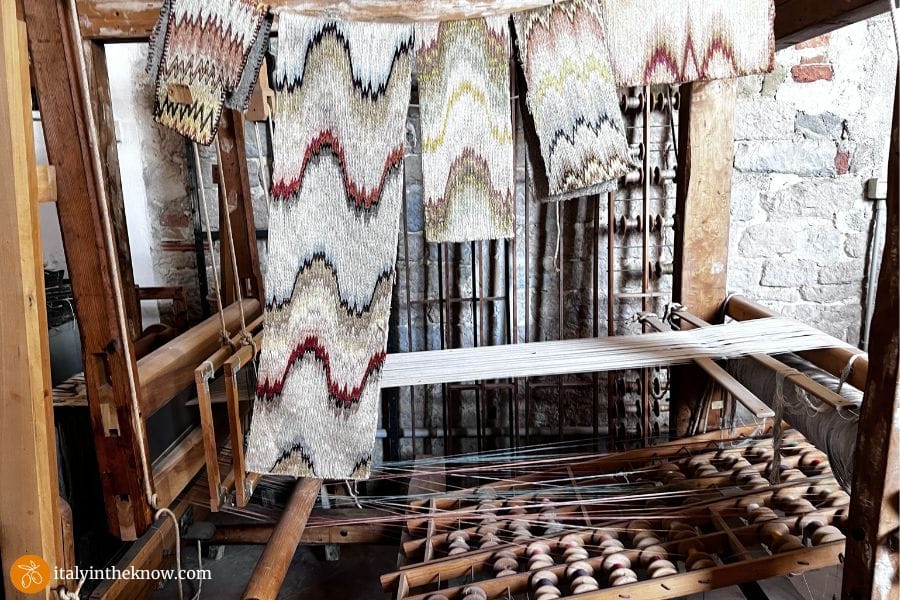
By restoring a 17th-century loom, they have successfully brought back the once-lost “Flame of Perugia” textile.
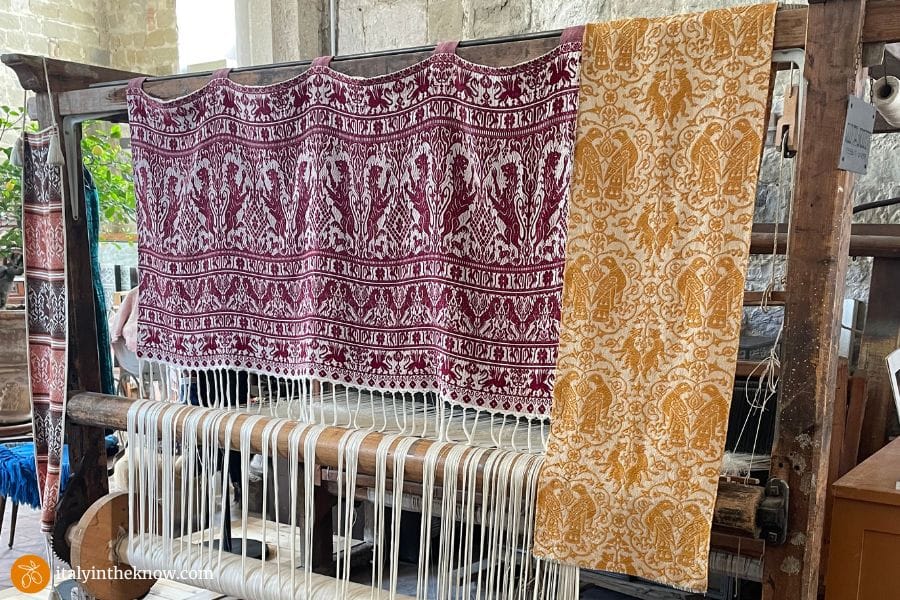
Eighteenth-century pedal looms used to create traditional Umbrian textiles.
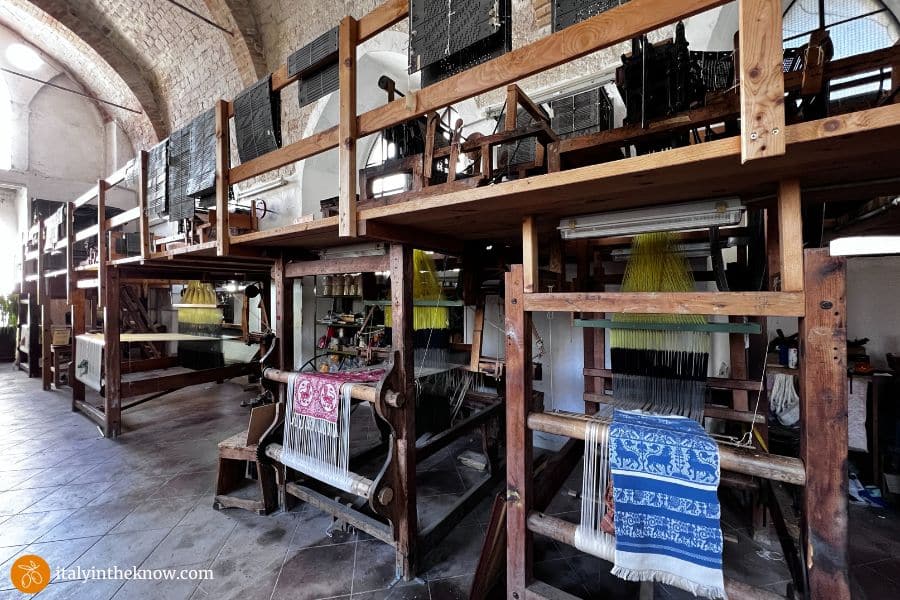
Jacquard looms, patented by Vincenzi in 1836, that use manual techniques to recreate historic damask patterns.
Location
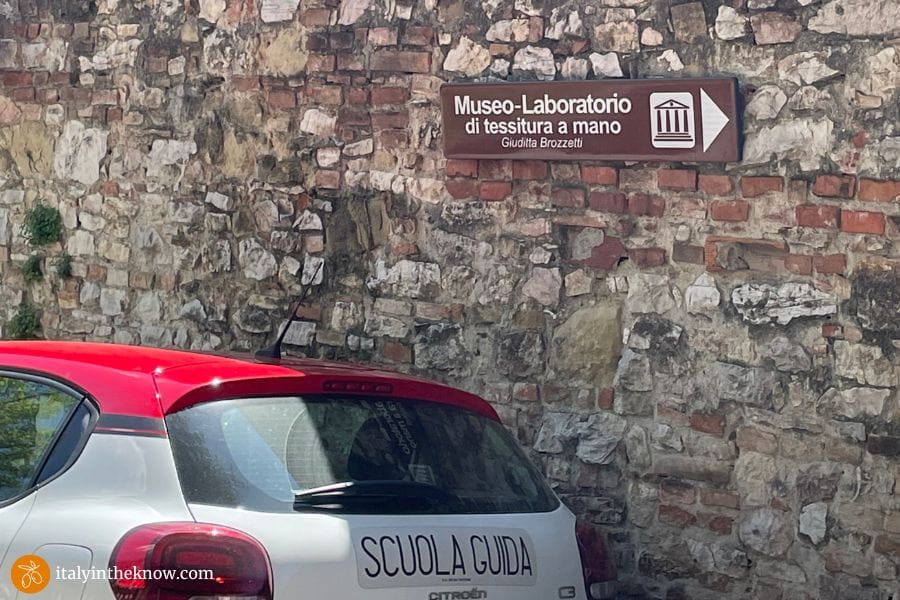
Perugia is easy to explore on foot, and the Giuditta Brozzetti Museum-Workshop is just a short walk from the city center at Via Tiberio Berardi, 5. It’s a good idea to park on the outskirts and stroll into the city.
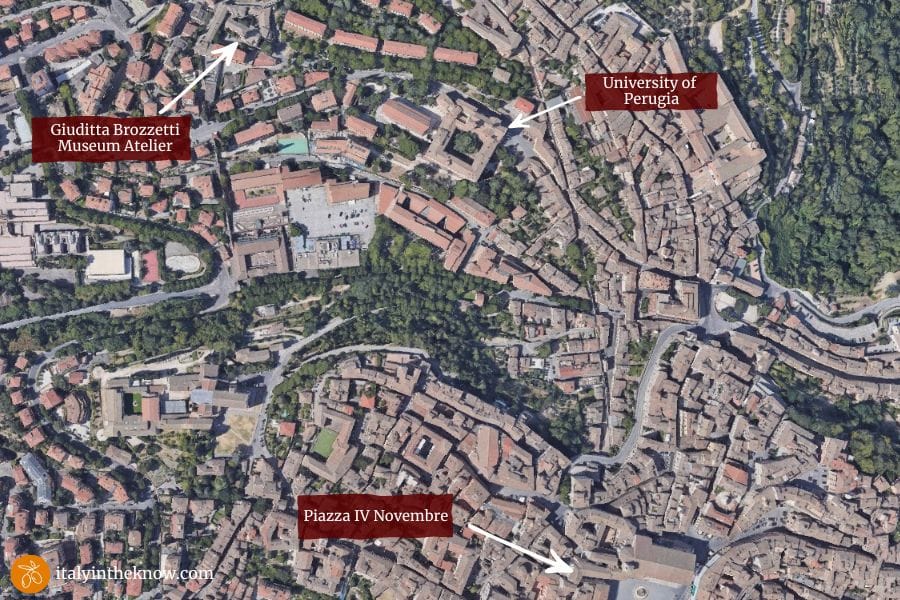
If you do decide to drive in the city, keep in mind that Perugia has limited traffic zones (ZTL), where entering can result in hefty fines. Unfortunately, GPS isn’t always dependable for avoiding these zones since ZTL rules and times can change. Make sure to watch for ZTL signs and use common sense—particularly if GPS directs you through an ancient gate (trust me, it’s better to think twice).
Hours
The museum-workshop hours are Monday – Friday from 8:30 until 12:30. Afternoons, Saturdays and Sundays are only by appointment. Admission is free.
Guided Tours
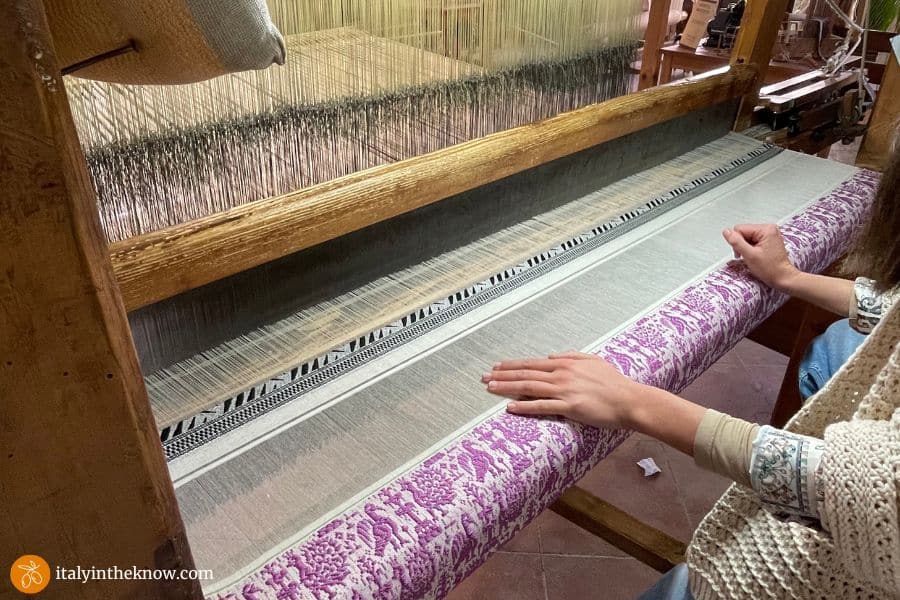
While you can visit during regular hours, scheduling a guided tour of the museum-workshop offers a more immersive experience. The 45-60 minute tours cover the history of Umbrian textiles and include practical demonstrations of hand weaving on original 18th and 19th-century looms.
To check tour availability, simply complete the form on the website. Since awareness of the studio is growing, it’s best to send your request well ahead of your trip to Italy.
When I sent my request for a tour, they were already fully booked. However, Hannalore and I were eager to visit, so I informed them that we would stop by anyway during their regular hours.
Knowing we were coming; Sophie graciously gave us a brief tour and demonstration after the scheduled tour. We were lucky to have that chance.

However, guided tour or not, the museum-workshop is still worth a visit. You can explore the historic church, see the looms and textile displays, and find a unique, beautiful souvenir that will remind you of Italy and this enchanting place.
If you can’t visit the studio, you can still bring the beauty of Umbrian textiles into your home by shopping at their online store.
Buon viaggio!
Click here to explore Italy in the Know on Pinterest. Discover more insights, exciting destinations, and tips for an unforgettable trip. Prepare for a fantastic trip with Italy in the Know as your guide!

